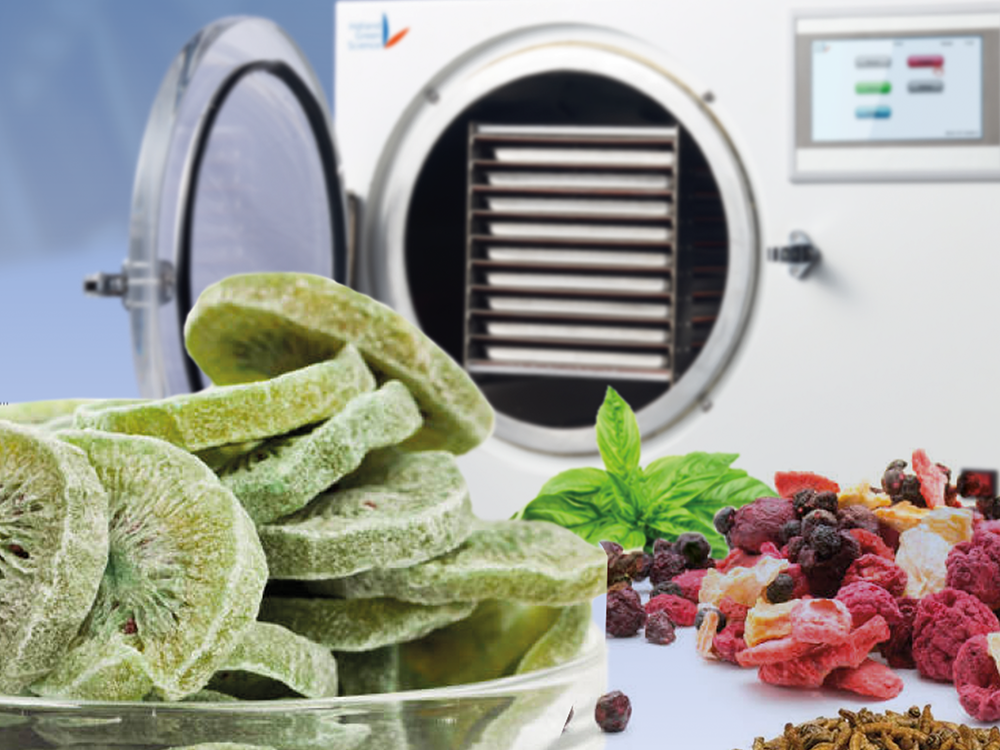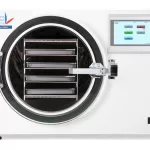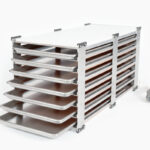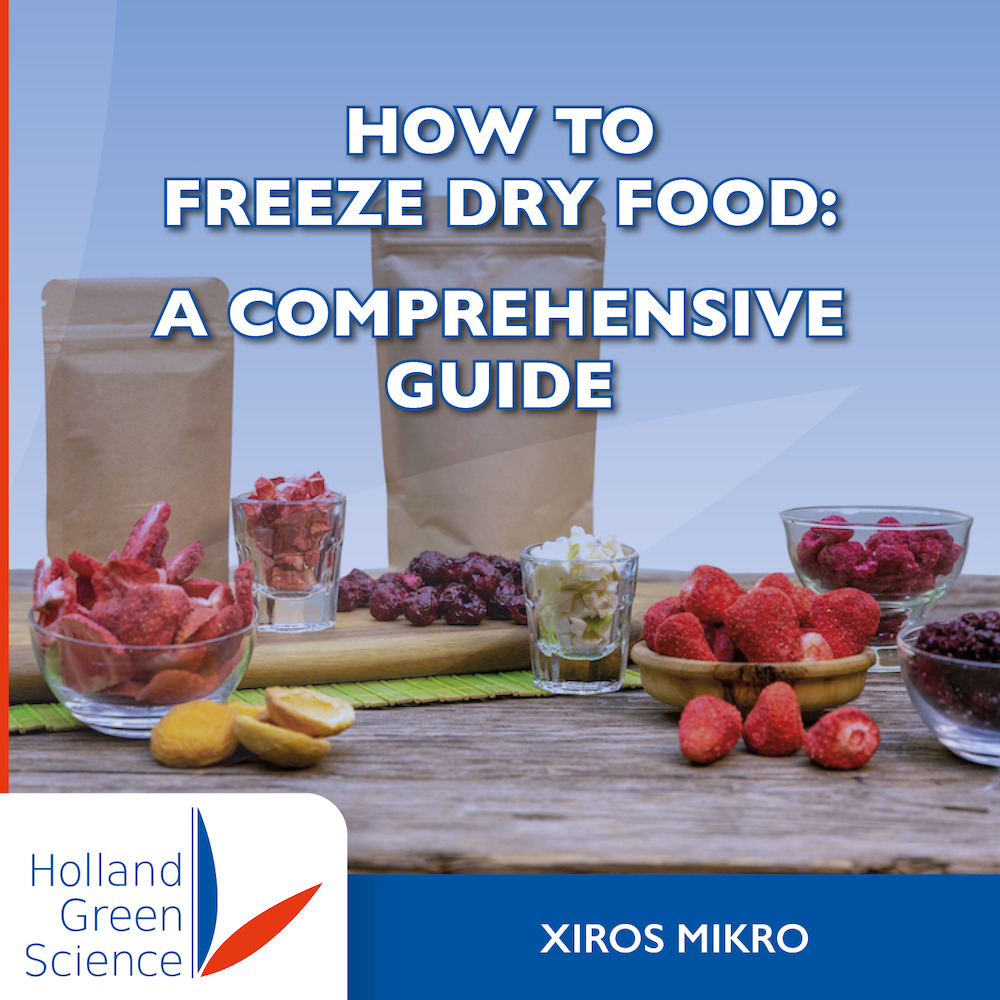
In this guide, you learn how freeze drying can keep food’s taste, texture, and nutritional value while extending its shelf life. Discover different techniques for making your own freeze dry fruit and foods and what to look for when purchasing them. This extraordinary preservation method will make a meal in the wilderness or even space delicious!
Short Summary
Freeze drying, or lyophilization, is a multi-step process to preserve food nutrients, color, flavor and appearance.
Freeze dried foods have an impressive shelf life of up to 25 years.
DIY freeze drying at home or investing in specialized equipment are options for preserving food. Alternative methods, such as freezing, should be considered before deciding which method to use.
The Science Behind Freeze Drying
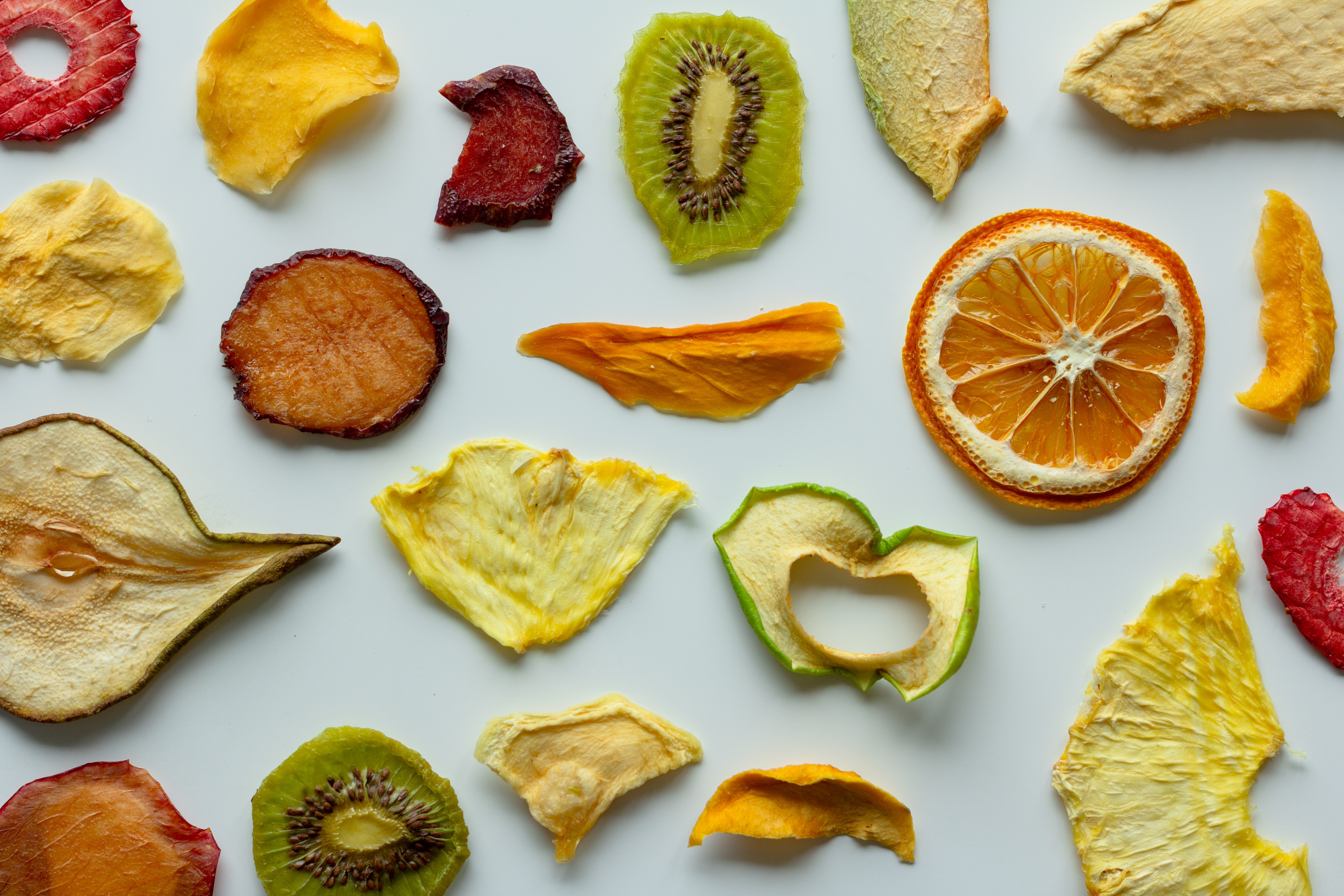
Lyophilization, known as freeze drying, is a method of preserving food by removing its moisture content. This advanced technique enables the retention of the most beneficial components and nutrients. To maintain color, flavor, and texture – making it ideal for freeze dried food such as fruits or vegetables with higher amounts of water.
The process contains four stages: pretreatment, freezing, primary drying & secondary drying (during this stage, pressure diminishes). Freeze dryers that use microwaves have been created explicitly aiding with sublimation/heating processes while utilizing minimal energy for maximum efficiency during these endeavors. Not only has freeze-drying been implemented in various industries, including pharmaceuticals but also within much practical day-to-day usage such as food processing/preservation.
Comparing Freeze Dried Foods and Dehydrated Foods
Freeze dried food can have many advantages over dried foods prepared using conventional methods, such as preserving their flavor, texture, and appearance. Freeze drying food helps keep the color while maintaining their rehydration capabilities – something traditional dehydration fails to do with equal efficiency.
The military forces were most interested in utilizing these kinds of products for rations during space exploration or war missions because they would offer a better quality alternative regarding taste and preservation capacities than dry goods.
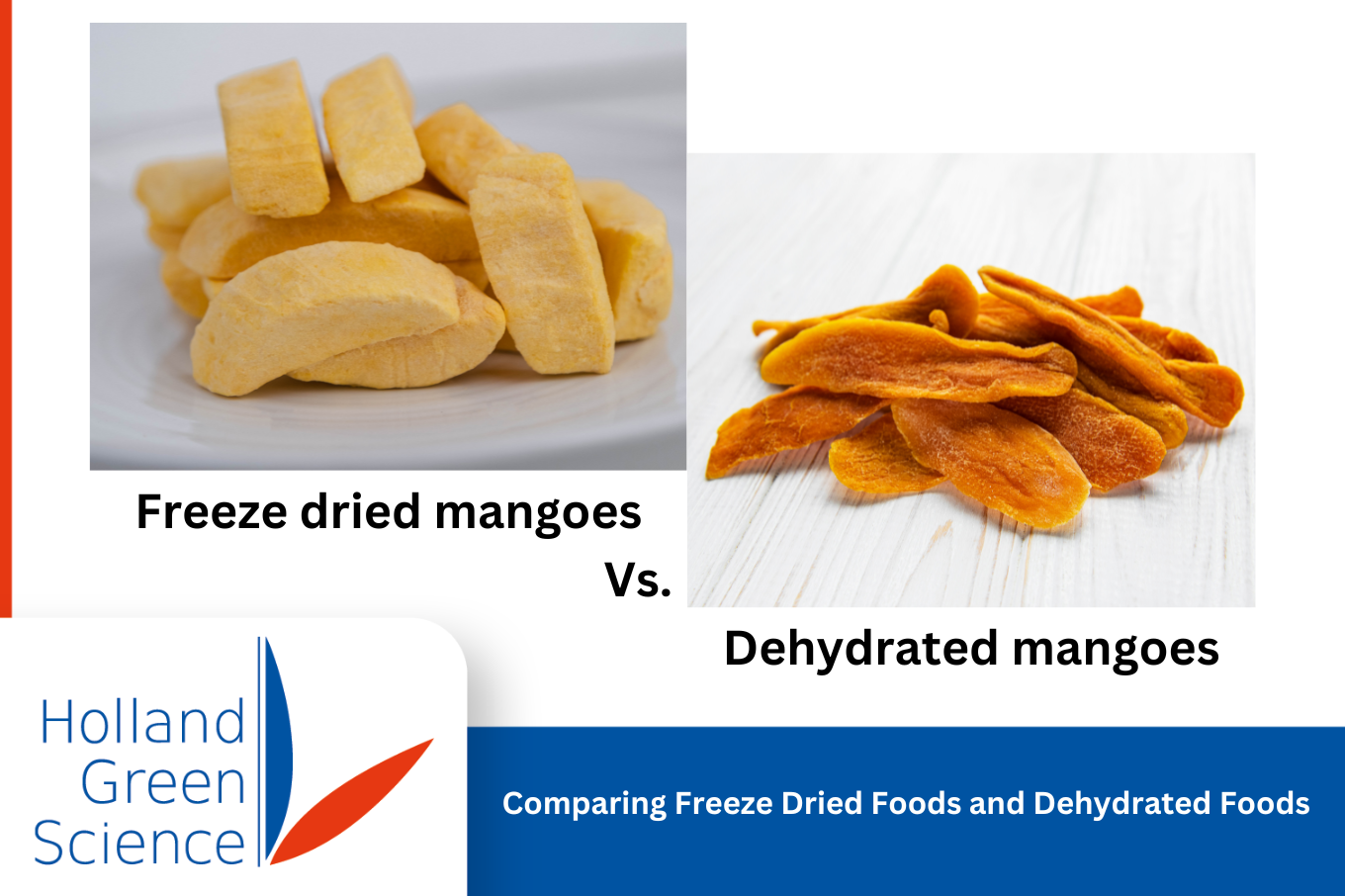
Freeze-Dried Foods:
Longer Shelf Life: Freeze-dried foods have a longer shelf life compared to dehydrated foods, lasting up to 20-25 years
Retain Original Shape, Texture, and Color: Freeze-dried foods retain their original shape, texture, and color after rehydration
Faster Rehydration: Freeze-dried foods rehydrate faster than dehydrated foods due to their more porous nature
Retain Nutritional Value: Freeze-dried foods retain the majority of the vitamins and minerals found in their original state due to the “cold, vacuum” process used in freeze-drying
Dehydrated Foods:
Ease of Homemade Preparation: Dehydrated foods can be easily made at home
Lower Moisture Content: Dehydrated foods have a lower moisture content compared to freeze-dried foods, typically having about 90-95% of the moisture removed
Different Texture: Dehydrated foods can have a leathery, crispy, or chewy texture and may not retain the same texture as their fresh counterparts
Traditional and Modern Freeze Drying Techniques
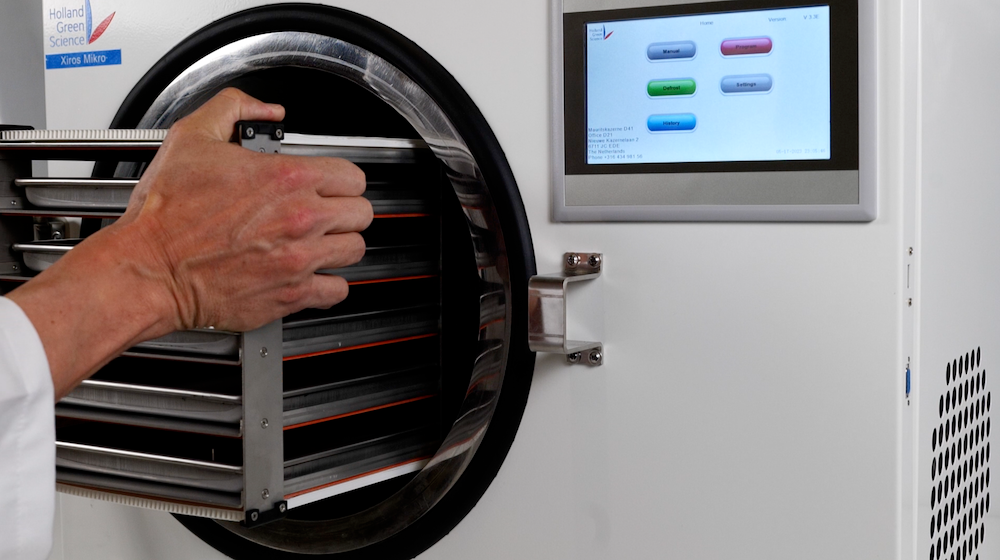
Freeze drying, a process of food preservation used since South American Andes times, is comparable to the freeze-thaw cycles witnessed in Vermont during their maple sugaring season. A result of this traditional technique yields a product known as Chuo that can be held without any more maintenance for years on end.
Modernized techniques involving controlled temperatures and vacuum chambers have evolved from these classic methods. Freeze dryers use vacuum and heated plates to return the energy to the proper freeze drying process. Due to its limited depth ability, it works better with shallow trays and as much surface area of the fresh food as possible, so cut into small pieces.
Traditional freeze drying, once laborious, takes about 10 days when handling potatoes alone. More current commercial versions provide both efficacy and higher quality products than before, at least cost-wise. When selecting which method is best, one should evaluate all angles, such as costs versus reward, effectiveness, plus the desired outcome along before making an affirmation decision.
DIY Freeze Drying at Home
If you’re interested in freeze dry fresh food at home, then you may be wondering if it is possible without a special machine. While your freezer can still achieve the desired results, this route isn’t as efficient and requires patience while waiting for satisfactory outcomes.
An alternate way of DIY freeze drying involves using dry ice to form ice crystals. Safety precautions must be observed when handling them due to burns they cause on skin contact. The sublimation during the freezing process with this method could take several weeks until all moisture content from the food is entirely eliminated, leaving only dried-out remains behind.
Once accomplished either with a conventional domestic deep freezer or an appliance specifically made for such purpose, placing prepped edibles inside sealed airtight bags should follow up before storage takes place, whether that means adding these items into pantries or stashing them away within emergency kits outside of freezers are options too.
Doing so by yourself does have its limits, yet it presents itself as a worthy alternative meant solely for those who wish to preserve their fresh food but abstain from making investments related to buying costly machines.
Building Your Own Freeze Dryer
For those with more technical skills, constructing a home freeze dryer could be attractive. To build such a machine, you will need items like a vacuum pump, condenser, chamber, and other components, to operate them correctly. Step-by-step instructions for putting together the system are accessible online, but one must follow these carefully to get desired results from their creation.
Making your own freezer can come at a great cost in both money and time, as well as not delivering efficient performances compared to pre-made ones available commercially due to a lack of proper tools or expertise.
Using a Home Freeze Dryer
Freeze drying food can be a great way to preserve its nutritional value and extend shelf life, so many people find the ease of use of commercially available home freeze dryers appealing. Yet these machines come with hefty price tags. Even small models will cost a significant amount of money which could make them out of reach for some households trying to weigh up costs versus benefits when investing in a home freezer. There is also the choice of vacuum pump, you can go for a cheap oil vacuum pump, but the potential of contamination of oil with your product inside the vacuum chamber is there.
Before making this decision, consider how often you plan to freeze dry. What kind of food will need preserving; do you think of freeze dried meals or freeze dried snacks? Freeze dried fruit or/and freeze dried vegetables, dairy products or/and freeze dried meats; and any space restrictions in your home that might arise due to size requirements for owning such an appliance. Considering all factors should help inform whether getting hold of one is the right choice for you.
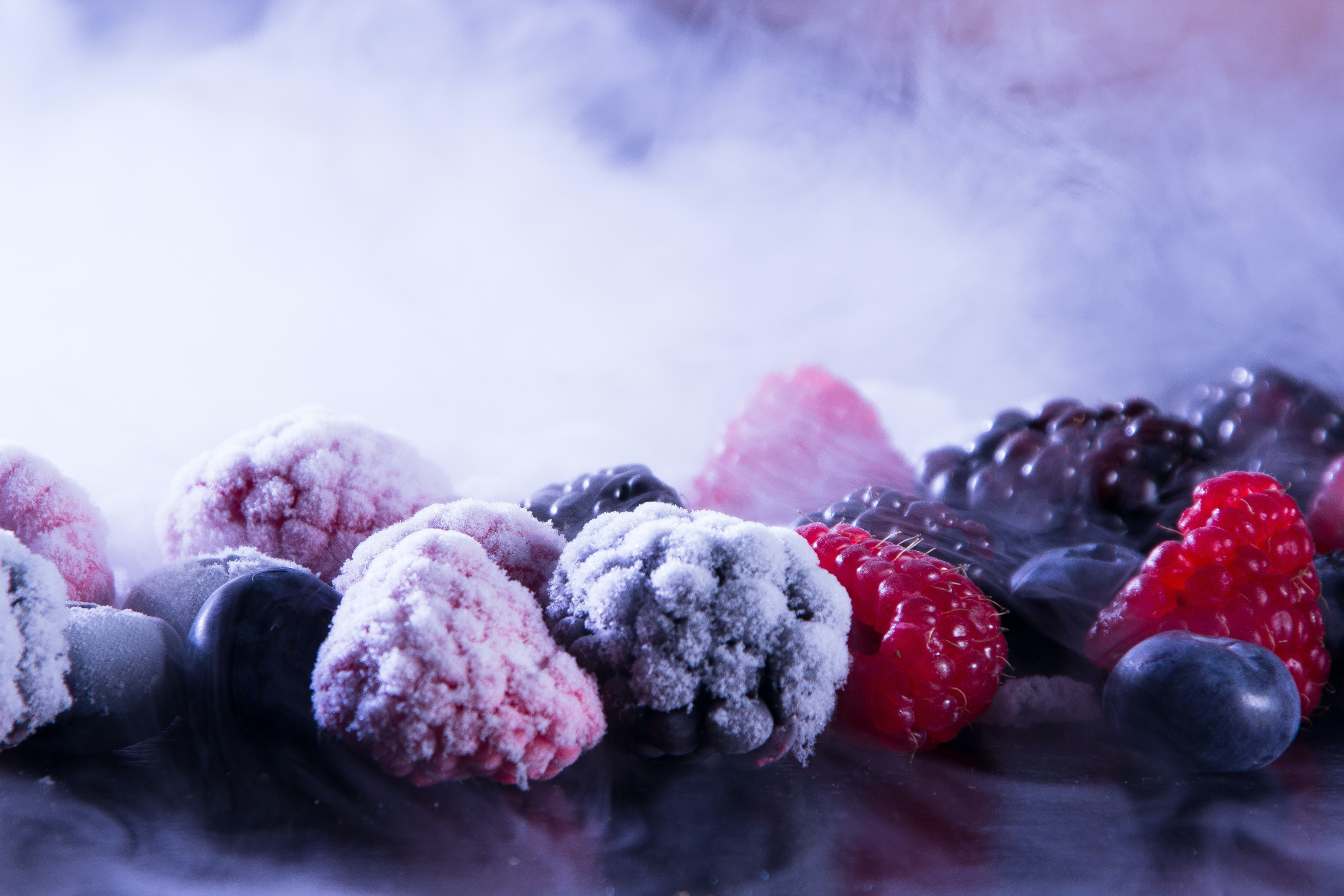
Preparing for Emergencies with Freeze Dried Food
When an emergency or crisis situation arises, having nutritious food that can last for a long time is very essential. Both freeze dried and frozen foods are ideal to include in any preparedness plan as they remain nutritional despite many years of storage. Freeze dried products like shrimp cocktail, chicken and vegetables, butterscotch pudding, and applesauce. These lightweight options not only ease the process of storing them but also take a few minutes to be rehydrated when needed.
A one-year high quality freeze dried supply package of camping meals explicitly tailored for an adult person will cost $5 600 approximately – which may seem too much at first glance, but it pays off by providing serenity during difficult times with easy access to nutrition and intact sustenance if necessary. Incorporating these items into your contingency plans could safeguard you and people close to you should anything unfortunate occur anytime soon.
Safely freeze-dry food at home
Freeze drying is a versatile preservation technique that has evolved from ancient practices to cutting-edge technology. Its unique ability to preserve foods’ taste, texture, and nutritional content makes it ideal for long-term storage and emergency preparedness.
Home freeze drying is all about controlling your food supply, ensuring that nutritious, delicious food is always within reach, no matter what.
Here are some additional resources for further reading on the subject:
Emergency Food Preparedness: this article provides a detailed guide on preparing an emergency food supply for short-term scenarios. The article also provides a list of food items suitable for emergency storage, including canned goods, commercially freeze dried food, high-energy foods, and foods for infants or those with special dietary needs. It also discusses managing food storage and what to do if electricity goes off.
Freeze-Drying for Long-Term Food Storage: freeze-drying is an excellent method for long-term food storage, food can be stored for 25+ years without compromising the quality or nutritional value of the food. It’s a versatile solution allows you to store various foods, including fruits, vegetables, meats, and dairy products.
Summary
Freeze drying is a fantastic food preservation method that has evolved from its traditional use in the Andes to modern commercial applications. With its ability to efficiently preserve foods’ taste, texture, and nutritional content, this technique provides an ideal solution for long-term storage requirements or emergency preparedness.
Investing in one’s home freeze dryer is beneficial if one understands what makes this process so effective. Familiarising with all aspects of freezer drying will help make informed decisions about how best to preserve food items now and for future consumption.
Frequently Asked Questions
How do you freeze dry at home?
A simple way of freeze drying at home is to pack your food into freezer bags that are suitable for use in the deep freeze. Put them inside a cooler and fill it up with dry ice to provide insulation for 24 hours. Cut it into small chunks after freezing, then layer those pieces evenly on one tray before transferring back into the freezer where they should stay untouched for a week. This is of course not the real freeze dried effect of what you get with a real freeze drying machine, but the cheap alternative way.
What does freeze dry do?
Freeze dry is an effective technique for preserving food’s flavor, texture, and nutritional benefits. Sublimation removes moisture and reduces it to the desired size to be conveniently storable in a freezer. Not only does this method help with preservation, but it also makes transportation easy due to its lightweight composition- reducing bulkiness when shipped or stored.
Can you freeze dry at home without a machine?
You can freeze-dry food at home without a specialized machine, using either your regular home freezer or dry ice, also known as frozen carbon dioxide. The freeze-drying process requires specific steps that are straightforward to follow, given you have the necessary tools and instructions.
The Xiros Mikro freeze dryer ensures a uniform freeze-drying process that maximizes food texture, color, and nutritional content preservation. While home methods are viable, they might achieve a different quality and consistency offered by the Xiros Mikro freeze dryer. Understanding these differences is crucial when choosing the best method for freeze-drying needs.
Are freeze dryers worth it?
Investing in a freeze dryer may be worthwhile due to the advantages of freeze dry food, such as having an extended shelf life with lower moisture content and quicker rehydration than dehydrated or dried foods while still retaining their original appearance, texture, and flavor. The output of a real freeze dryer gives the best possible food quality compared to the DIY methods mentioned.
Freeze drying food also has numerous benefits over simply drying it. These include better taste retention upon reconstitution into liquid form, plus keeping the shape and color intact despite being preserved.
Can you freeze dry fresh vegetables?
Using a Xiros Mikro freeze dryer, you can keep your vegetables crisp and flavorful. Freeze drying is an excellent way to preserve the freshness of veggies while preserving their taste and texture. This process extends its shelf life drastically compared to standard methods of refrigeration or freezing without altering essential nutrients present in them.
Why Opt for Freeze Drying with Xiros Mikro?
Freeze drying with the Xiros Mikro freeze dryer opens up a world of possibilities! You can freeze-dry over 100 different types of food, ensuring that almost all fresh food’s nutritional value is retained. Unlike other preservation methods like canning and dehydrating that utilize high temperatures and can degrade nutritional content, freeze drying is a gentle process. Freeze-dried food can last up to 25 years, far surpassing the shelf life of refrigerated, frozen, or canned foods, making it a perfect choice for home storage.
How does the Shelf Life Compare?
Freeze-Dried Food: up to 25 years
Dehydrated Food: up to 4 years
Canned Food: up to 3 years
Frozen Food: up to 2 years
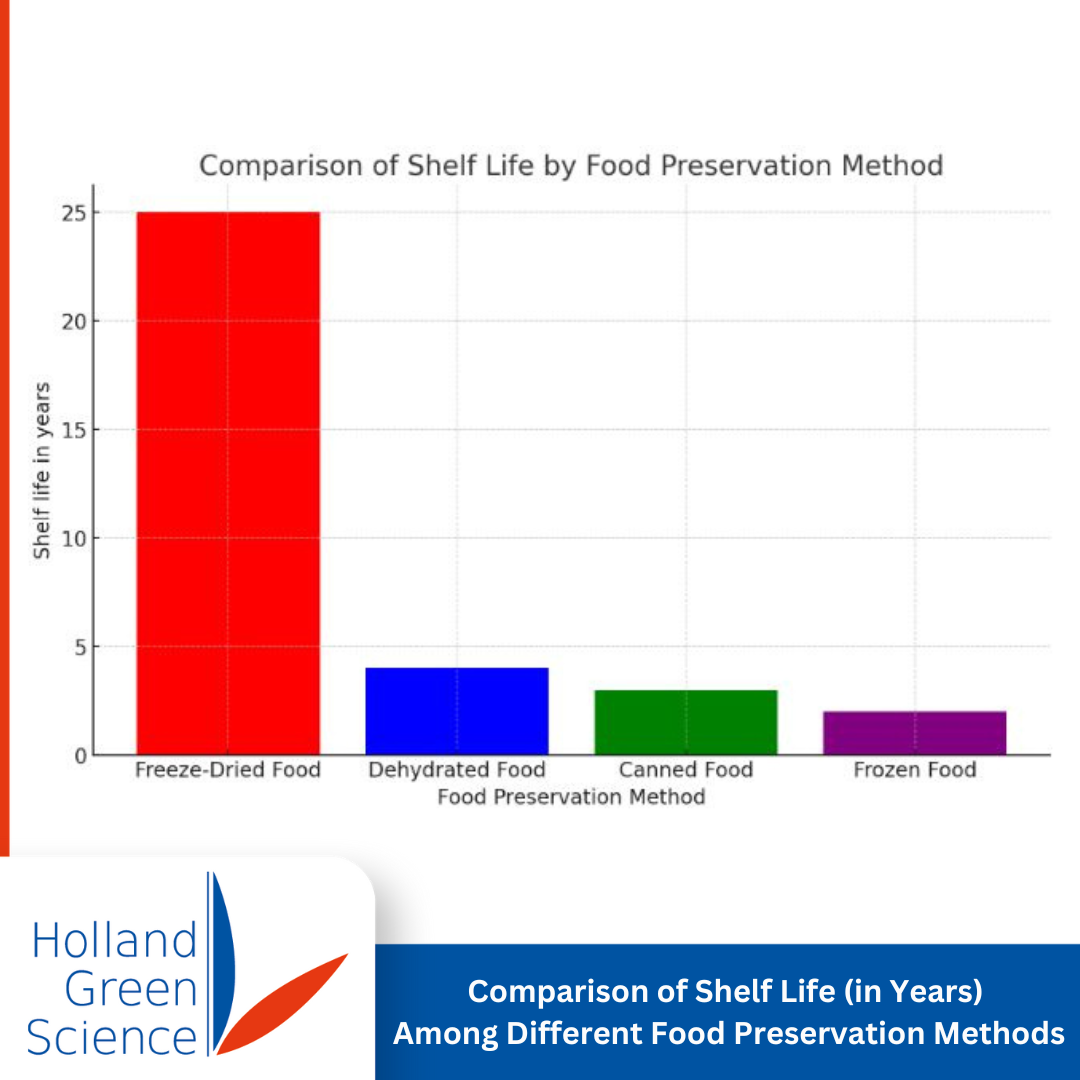
The Xiros Mikro Advantage
Food freeze-dried with the Xiros Mikro freeze dryer surpasses the quality of store-bought freeze-dried food in appearance and taste. Xiros Mikro is excellent for fruits and vegetables and perfectly preserves meat, fish, dairy, eggs, and even ice cream or fully-cooked meals.
Indulge in Delicious Freeze-Dried Snacks and Desserts
Experience the joy of delicious freeze-dried desserts and snacks! From freeze-dried ice cream to gummy bears and even Skittles – the demand for freeze-dried sweets has led to a surge of businesses specializing in freeze-dried confections.
Cost-Effective and User-Friendly
Food freeze-dried at home with the Xiros Mikro freeze dryer doesn’t just look and taste superior to store-bought variants; it’s also much more economical! You can freeze dry all your leftover meals, saving more money. The operation is simple, too – just press start on the touch screen and select the program for the products you placed in it, and you’re all done.
What Do Users Say?
Our customers have expressed great satisfaction with their freeze-drying results. They’ve successfully freeze-dried a range of foods from roast beef and chicken to strawberries and bananas, all yielding excellent results. Our users have found the Xiros Mikro a beneficial and cost-effective solution, especially for preparing for times when food might not be readily available. They have also praised our knowledgeable, friendly, and reliable customer service and dealer network.
Embrace the Power of Freeze Drying for a Wide Range of Foods
The possibilities are endless with the Xiros Mikro freeze dryer, from fruits and meats to vegetables and dairy. Imagine having a pantry stocked with freeze-dried apples, avocados, bananas, chicken, fish, ham, asparagus, beans, broccoli, eggs, milk, basil, chives, beef stroganoff, casseroles, coffee, cheesecake, gummy bears, and so much more!
By freeze drying at home with Xiros Mikro, you can ensure the quality and nutritional value of your snacks and meals. Let’s embark on a journey towards healthier, cost-effective, and long-lasting food preservation with freeze drying.
So why wait? You can take advantage of the Xiros Mikro freeze dryer today and experience the benefits of this outstanding preservation technique.
Visit us at:
https://hollandgreenscience.eu/products/
We’re just a call or an email away!
Contact us by calling +31 643 498 156
or send us an email at saleseurope@hollandgreenscience.com
To stay in the loop with our latest updates, innovations, and events, follow us on LinkedIn and Instagram!
Let’s explore a freeze dried future together!
